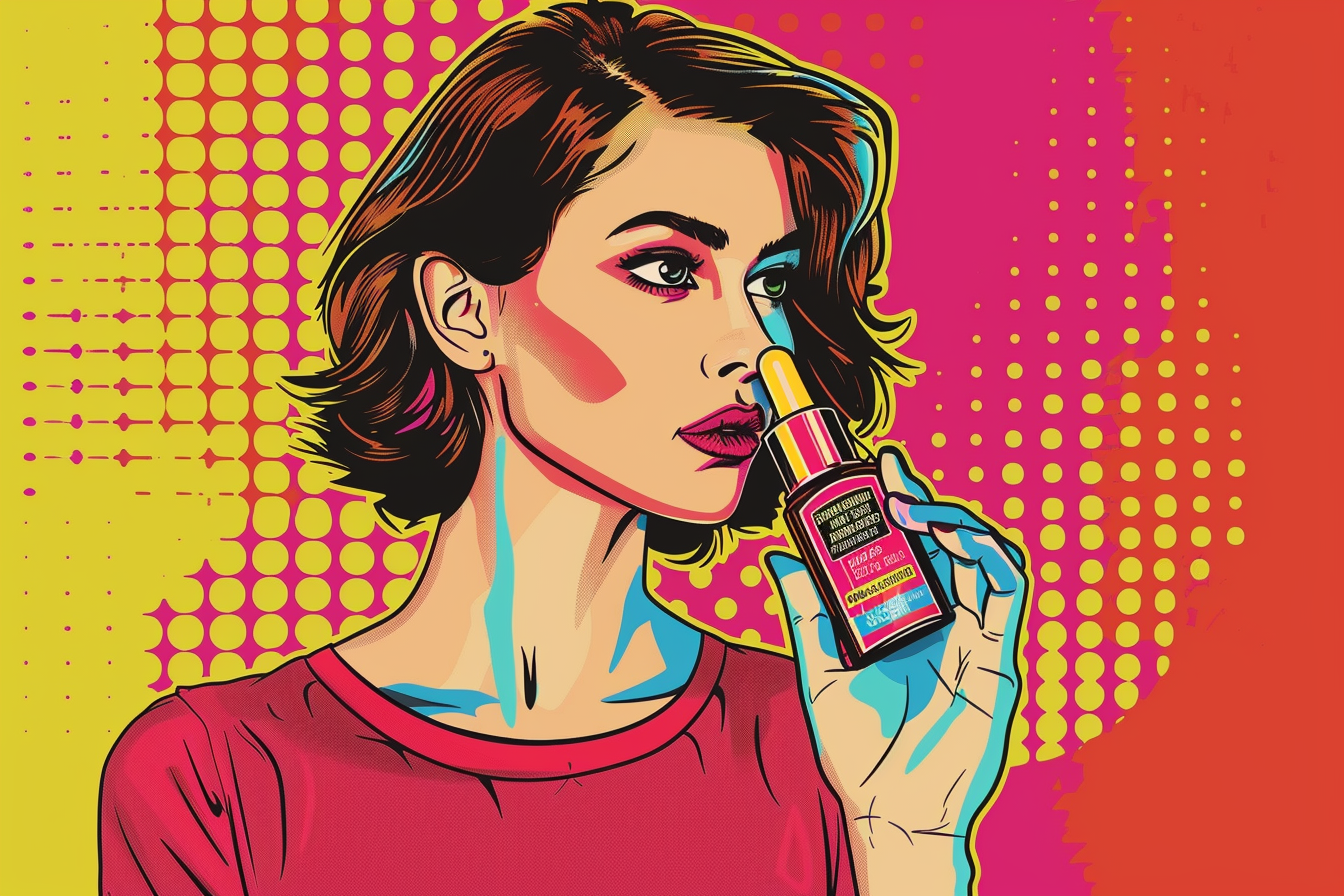
If your skin tends toward oiliness, the idea of putting even more oil on your face may sound downright scary. Seriously, that could only make things worse, right?
Actually, nothing could be further from the truth. The idea that oils spell trouble for oily skin is one of those stubborn beauty myths that just keep hanging on, despite all the solid evidence to the contrary.
The good news is that adding facial oils to your skincare routine can actually help keep your skin’s oil production balanced—while giving you the clearest, healthiest complexion of your life.
What’s the Best Way to Clean Oily Skin?
If you’ve spent years trying to blast away every last drop of oil on your face, brace yourself: it turns out all those harsh soaps and foaming cleansers you thought were necessary actually produce the opposite effect—they can strip your skin of its natural protective barrier.
And once this barrier is lost or becomes imbalanced, your skin overreacts, potentially leading to new skin issues.
While it might seem counterintuitive, using a high-quality facial oil to cleanse and hydrate your skin can actually help support a balanced complexion. Oils attract and bind to all kinds of pore-clogging substances like excess sebum (the oily substance secreted by the sebaceous glands to moisturize hair and skin), makeup, dirt, grime, and pollutants, which can then be easily wiped away—leaving your face feeling clean without that uncomfortable dry, tight sensation that comes with most commercial cleansers.
For a fresh, clean, hydrated face, simply choose a good facial oil for oily skin (such as jojoba or argan) and gently massage it onto your face to loosen up dirt and grime. Then wipe away with a warm, damp washcloth. It’s that simple! And bonus: this method is even gentle enough to use for removing eye makeup.

But Wait, Doesn’t Oil Cause Breakouts?
The notion that all topical oils lead to breakouts is another die-hard beauty myth that needs busting. The truth is, applying the proper facial oils can actually help support your skin’s health.
How do you choose an oil for breakout-prone skin? First, it’s critical to go with one that’s non-comedogenic—in other words, an oil that doesn’t clog up pores. Some otherwise healthy oils that aren’t well-suited for oily skin because of their higher comedogenic scores include coconut oil and wheat germ oil. Top winners in the non-comedogenic department (and great choices for oily skin) are argan oil, jojoba oil, hemp oil, and castor oil.
The next thing to consider if breakouts are an issue for you is the amount of linoleic acid a particular facial oil contains. That’s because scientists believe that skin that’s both oily and vulnerable to breakouts tends to be deficient in linoleic acid—and research backs up this theory nicely.1 In a double-blind, placebo-controlled, randomized study, applying this essential fatty acid topically helped support beautiful, clear skin.2
Each type of botanical oil contains its own unique balance of essential fatty acids. A few you might want to consider for their high linoleic acid content include:
• Rosehip
• Hemp
• Borage
• Prickly pear
• Grapeseed
• Castor
If you’re struggling with a lot of stress along with stubborn breakouts, you might want to try adding a few drops of lavender oil to your favorite bottle of facial oil. Since stress may worsen breakouts by stimulating sebum production, lavender’s relaxing qualities can help encourage clear skin.3,4
Oily Skin Still Needs Moisture
Even if your skin feels oily to the touch, it can still lack vital hydration. Moisturizing with a natural, high-quality facial oil both nourishes and hydrates at the same time—so your complexion takes on a truly healthy glow without any annoying shine. Thankfully, Mother Nature offers a wide variety of pure, non-comedogenic oils that make excellent moisturizers for even the most oily skin. Here are a few of our top picks:
Jojoba
Technically a polyunsaturated wax made from cold-pressed Simmondsia chinensis seeds, jojoba is unique among facial oils because it so closely resembles your skin’s natural sebum. When you moisturize with jojoba oil, your skin is tricked into thinking it already produced enough oil—so it can take a bit of a break.5 To make things even better, jojoba oil is loaded with vitamins, minerals, and antioxidants to nourish your face—effectively hydrating and soothing to give you a dewy, vibrant complexion.6,7,8
Rosehip
Harvested from the seedpods of wild rose plants, this gentle oil is loaded with antioxidants, linoleic acid, and vitamins. Moisturizing with rosehip oil not only helps to keep oily skin calm, bright, hydrated, and clear—it’s also a great choice for managing the challenges of mature oily skin.9 Research shows that rosehip oil can can reduce the appearance of wrinkles and support healthy skin elasticity for head-turning, ageless beauty.10
Argan
This lovely exotic oil, which comes from the fruit of the Moroccan Argania spinosa tree, is a top choice for oily skincare since science reveals that argan can support balanced sebum production.11 As if that wasn’t reason enough to reach for some argan oil, studies show that it can work wonders on skin of all ages. In addition to supporting sebum production, argan oil has also been found to calm, hydrate, firm, plump, and smooth out your complexion.12,13,14,15
Prickly Pear
Sourced from the prickly pear cactus plant, this beauty oil is naturally high in linoleic acid —along with a rich cocktail of essential fatty acids, antioxidants, and vitamins to condition, smooth, hydrate, and brighten the appearance of your skin.16
Castor
This household staple, made from the seeds of the castor bean plant, can help support clear, calm, and healthy skin without negatively impacting its living microbiome.17
When moisturizing with facial oils, a little bit goes a very long way. Just a drop or two should be enough to care for your entire face.
Choosing the Best Oil for Skin That’s Oily
Once you’ve decided on the best botanical oil for you, it’s important to understand that not all facial oils are really what they claim to be—and when you read labels carefully you’ll find that some “natural” products contain only tiny amounts of the beneficial ingredient you were actually looking for. To truly pamper and balance your skin, seek out a pure, single-ingredient, ethically sourced, cruelty-free oil, such as one of our Valentia facial oils, that’s free of GMOs, sulfates, parabens, or any other artificial additives.
Hopefully you’re ready to put the tired old myth about oil being a bad for oily skin to rest once and for all, and make friends with some of nature’s finest beauty elixirs. Before you know it, your skin will look so gorgeous that everyone will want to know your secret.
References:
1. Downing, D. T., Stewart, M. E., Wertz, P. W., & Strauss, J. S. (1986). Essential fatty acids and acne. Journal of the American Academy of Dermatology, 14(2), 221-225. doi:10.1016/s0190-9622(86)70025-x
2. Letawe, Boone, & Pierard. (2002). Digital image analysis of the effect of topically applied linoleic acid on acne microcomedones. Clinical and Experimental Dermatology, 23(2), 56-58. doi:10.1046/j.1365-2230.1998.00315.x
3. Chiu, A., Chon, S. Y., & Kimball, A. B. (2003). The Response of Skin Disease to Stress. Archives of Dermatology, 139(7). doi:10.1001/archderm.139.7.897
4. Chien, L., Cheng, S. L., & Liu, C. F. (2012). The Effect of Lavender Aromatherapy on Autonomic Nervous System in Midlife Women with Insomnia. Evidence-Based Complementary and Alternative Medicine, 2012, 1-8. doi:10.1155/2012/740813
5. Cove, J.H., Holland, K.T., Cunliffe, W.J. (1980). An Analysis of Sebum Excretion Rate, Bacterial Population and the Production Rate of Free Fatty Acids on Human Skin. British Journal of Dermatology, 103(4), 383–386. doi: 10.1111/j.1365-2133.1980.tb07260.x
6. Meier, L., Stange, R., Michalsen, A., & Uehleke, B. (2012). Clay Jojoba Oil Facial Mask for Lesioned Skin and Mild Acne Results of a Prospective, Observational Pilot Study. Forschende Komplementärmedizin / Research in Complementary Medicine, 19(2), 75-79. doi:10.1159/000338076
7. Stamatas, G. N., De Sterke, J., Hauser, M., Von Stetten, O., & Van der Pol, A. (2008). Lipid uptake and skin occlusion following topical application of oils on adult and infant skin. Journal of Dermatological Science, 50(2), 135-142. doi:10.1016/j.jdermsci.2007.11.006
8. Habashy, R., Abdelnaim, A., Khalifa, A., & AlazIzi, M. (2005). Anti-inflammatory effects of jojoba liquid wax in experimental models. Pharmacological Research, 51(2), 95-105. doi:10.1016/j.phrs.2004.04.011
9. Mármol, I., Sánchez-de-Diego, C., Jiménez-Moreno, N., Ancín-Azpilicueta, C., & Rodríguez-Yoldi, M. (2017). Therapeutic Applications of Rose Hips from Different Rosa Species. International Journal of Molecular Sciences, 18(6), 1137. doi:10.3390/ijms18061137
10. Winther, K., Wongsuphasawat, K., & Phetcharat, L. (2015). The effectiveness of a standardized rose hip powder, containing seeds and shells of Rosa canina, on cell longevity, skin wrinkles, moisture, and elasticity. Clinical Interventions in Aging, 1849. doi:10.2147/cia.s90092
11. Dobrev, H. (2007). Clinical and instrumental study of the efficacy of a new sebum control cream. Journal of Cosmetic Dermatology, 6(2), 113-118. doi:10.1111/j.1473-2165.2007.00306.x
12. Guillaume, D., & Charrouf, Z. (2013). Argan oil for nutritional and skin care applications. Retrieved from http://www.teknoscienze.com/agro/pdf/GUILLAUME_AF2_ANTI-AGING_2013.pdf
13. Silva, A. C., Amaral, M. H., Sousa Lobo, J. M., & Tichota, D. (2014). Design, characterization, and clinical evaluation of argan oil nanostructured lipid carriers to improve skin hydration. International Journal of Nanomedicine, 3855. doi:10.2147/ijn.s64008
14. Bensouda, Y., Qiraouani Boucetta, K., Charrouf, Z., Aguenaou, H., & Derouiche, A. (2015). The effect of dietary and/or cosmetic argan oil on postmenopausal skin elasticity. Clinical Interventions in Aging, 339. doi:10.2147/cia.s71684
15. Boucetta, K. Q., Charrouf, Z., Derouiche, A., Rahali, Y., & Bensouda, Y. (2014). Skin hydration in postmenopausal women: argan oil benefit with oral and/or topical use. Menopausal Review, 5, 280-288. doi:10.5114/pm.2014.46470
16. Antunes-Ricardo, M., Gutiérrez-Uribe, J. A., López-Pacheco, F., Alvarez, M. M., & Serna-Saldívar, S. O. (2015). In vivo anti-inflammatory effects of isorhamnetin glycosides isolated from Opuntia ficus-indica (L.) Mill cladodes. Industrial Crops and Products, 76, 803-808. doi:10.1016/j.indcrop.2015.05.089










